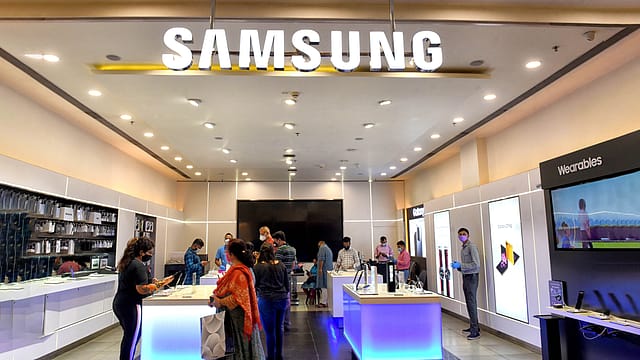India's smartphone shipments drop 20% in March quarter; Samsung retains top spot
ADVERTISEMENT

The Indian smartphone market had a tough start to 2023, witnessing the first-ever Q1 shipment decline of 20% year-on-year, according to market research firm Canalys.
Samsung remained in the top spot during January-March 2023 with a 21% market share, shipping 6.3 million smartphones. OPPO overtook vivo and Xiaomi to reach second place with 5.5 million shipments, driven by new product launches. Following closely behind, vivo came third with 5.4 million shipments, as it continued strong momentum in the offline channels. Xiaomi slipped to fourth place, shipping 5 million units, while realme maintained fifth place with 2.9 million shipments as the online channel remained muted.
"The Indian market faces early-year struggles but vendors keep fueling the market as they remain bullish on long-term prospects," says Sanyam Chaurasia, analyst at Canalys. "Just as the economic indicators toward the end of Q4 2022 clearly suggested that demand would remain sluggish in the short term, it was witnessed so in Q1 2023. Despite this challenge, investments from major brands are pouring in as they align with the government's vision and changing consumer behavior. They are focusing on optimizing retail, manufacturing, local sourcing, and R&D to secure their long-term position in the market."
"Q1 2023 showcased that brands must balance channel contributions to keep business operations stable and maintain share," says Chaurasia. "Vendors with efficient channel management have proven to be more resilient to market volatility. Post-pandemic, vendors who have nurtured mainline retail channels, have demonstrated stability even during market downturns. Increasing contributions from high-price-band models have encouraged vendors to focus on strengthening their offline channels. Samsung has been efficient with its fast-moving model placement in the offline space. For this quarter, it was the new 5G-capable A-series," he adds.
December 2025
The annual Fortune 500 India list, the definitive compendium of corporate performance, is out. This year, the cumulative revenue of the Fortune 500 India companies has breached $2 trillion for the first time. Plus, find out which are the Best B-schools in India.
The market is still witnessing uneven demand woes and channels remain vulnerable to stock build-up, says Canalys. Online heavy brands have driven units primarily through e-commerce sales, leading to periodic volume surges, it adds.
Apple chief executive officer Tim Cook on Tuesday opened the doors of Apple's first retail store in India, Apple BKC, in Mumbai’s BKC (Bandra Kurla Complex) business district. On Thursday, Cook unveiled the iPhone maker's maiden store in Delhi's Saket.
"Apple's new offline stores staffed by expert employees will further enhance its brand experience and position," says Chaurasia.
The premium smartphone segment is poised for growth, according to Chaurasia. "As disposable income gradually rises, consumers are willing to spend more on premium devices. To succeed in this segment, brands must prioritize availability, affordability and aspirational value. Going forward, brands should also emphasize export strategy to align with the government’s initiatives. At present, India's smartphone export growth is primarily driven by Apple and Samsung, helping achieve a record-breaking export value of almost US$4 billion in Q1," says Chaurasia.
Canalys expects modest smartphone shipment growth this year. However, to stimulate the upgrade cycle, 5G devices and other market drivers must offer compelling utility for consumers, the market analysis firm says.
